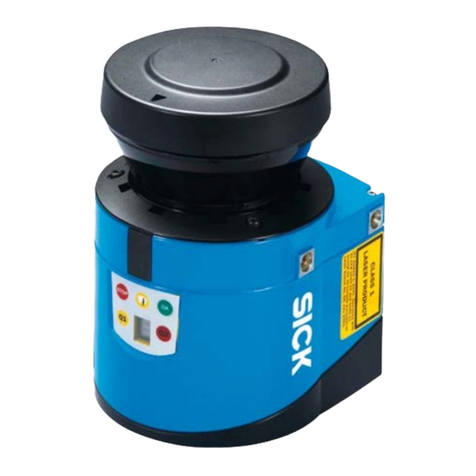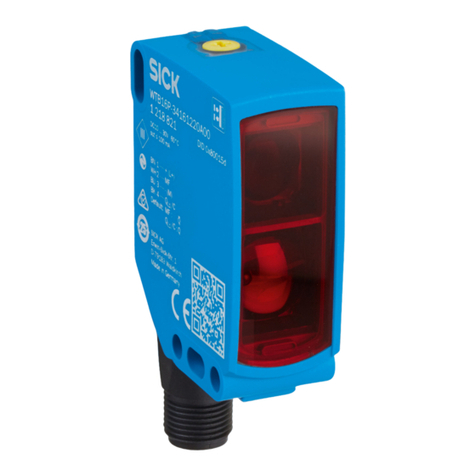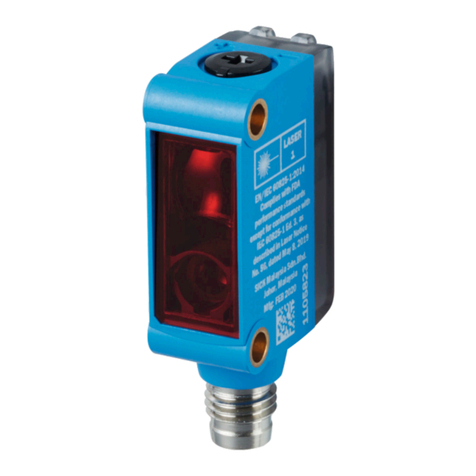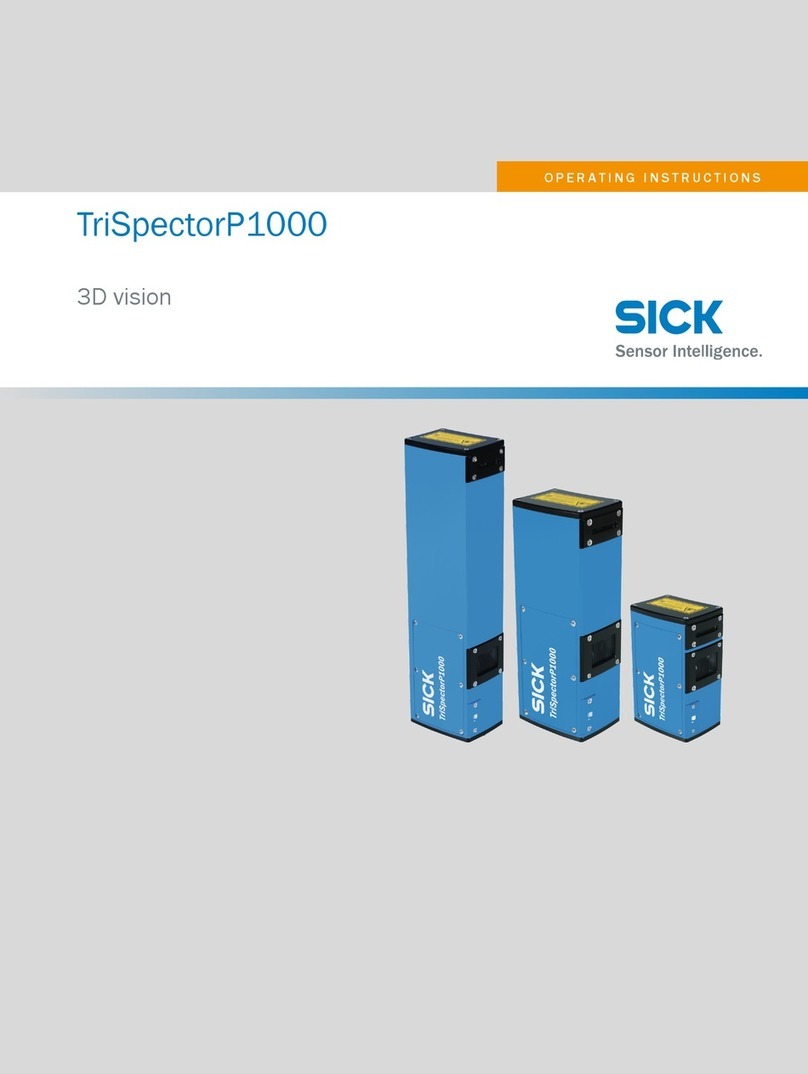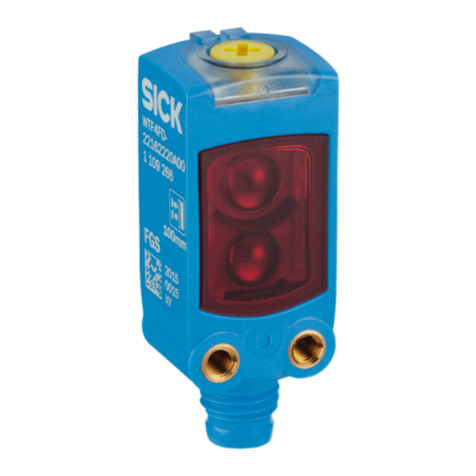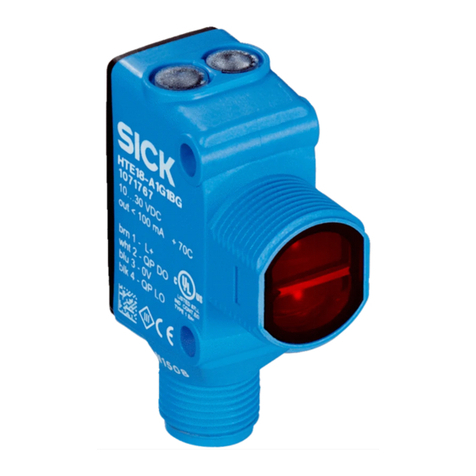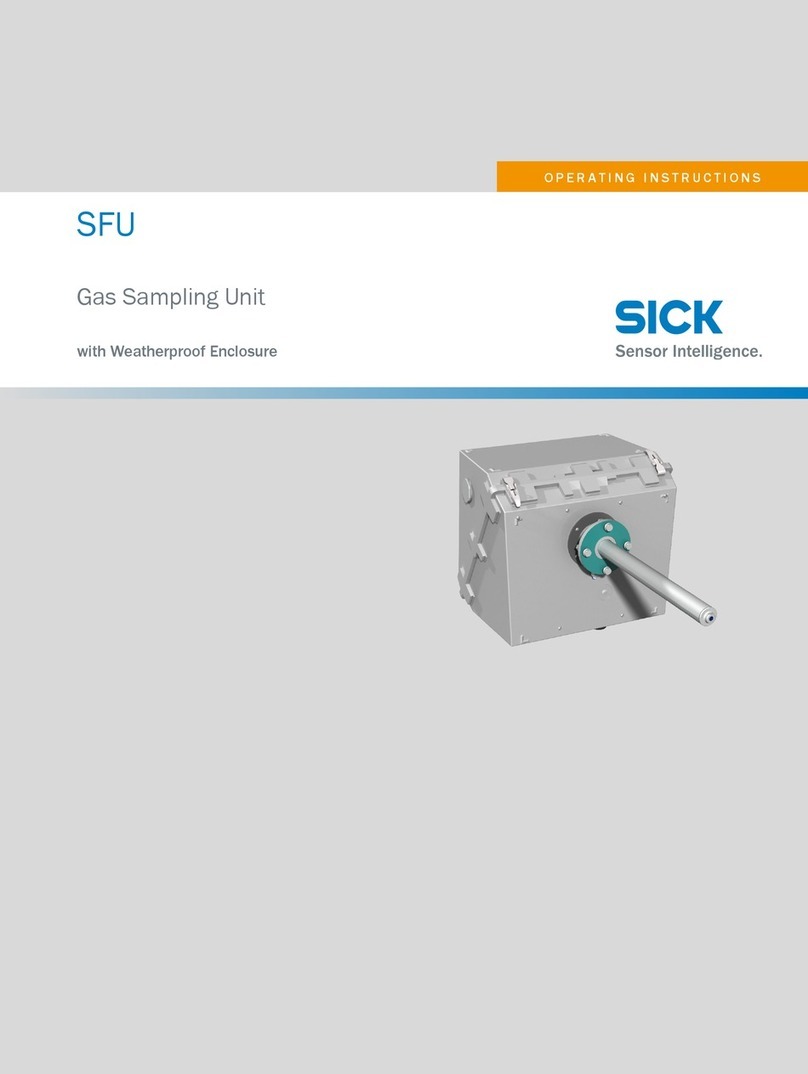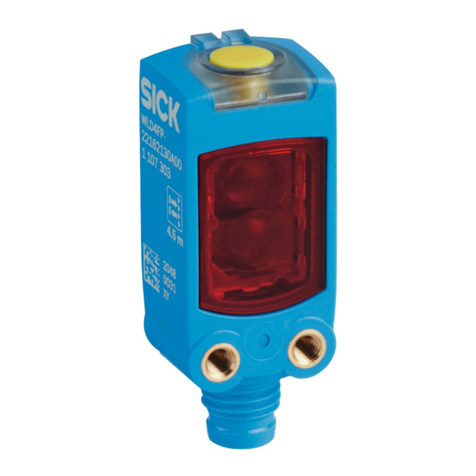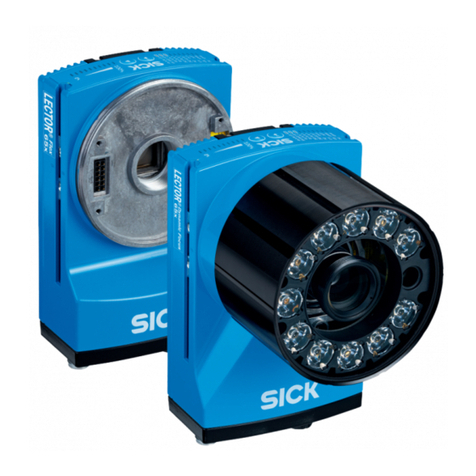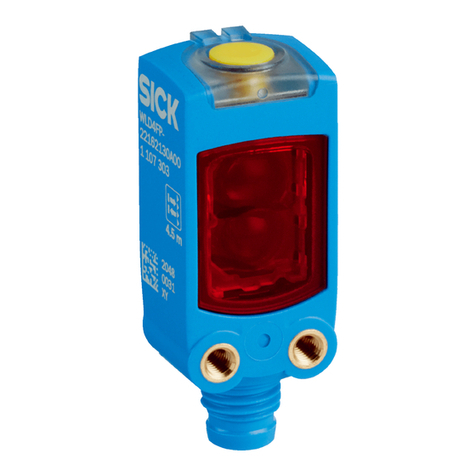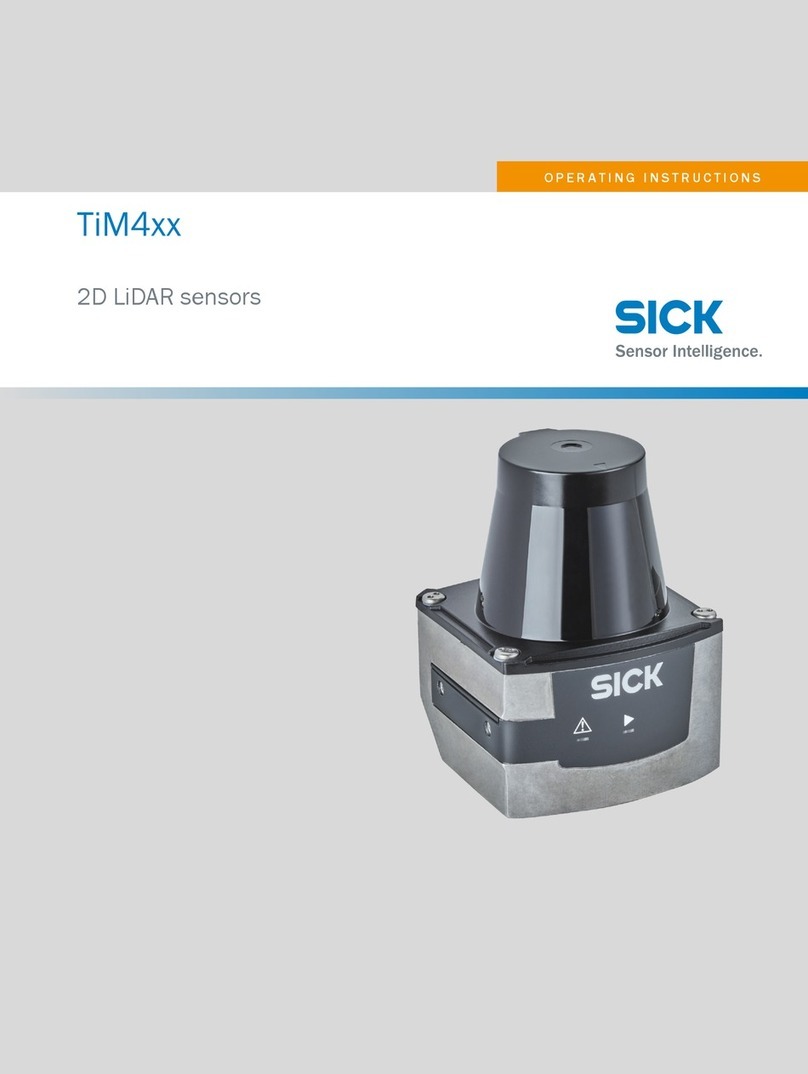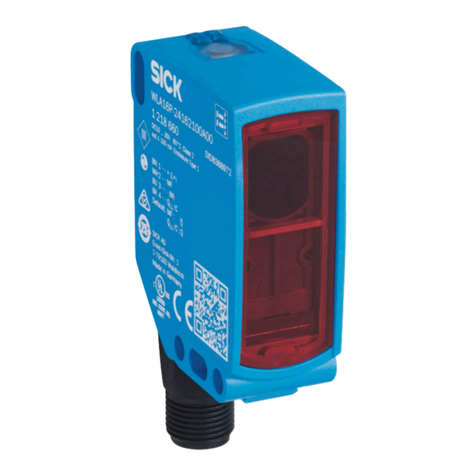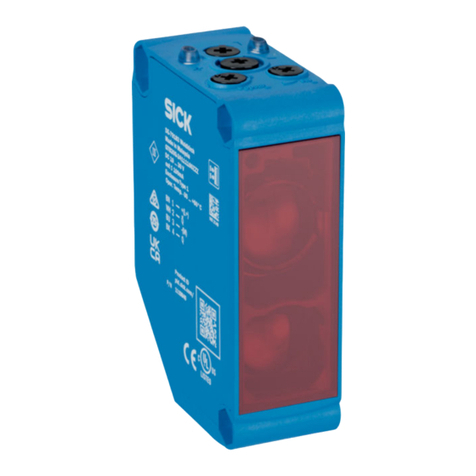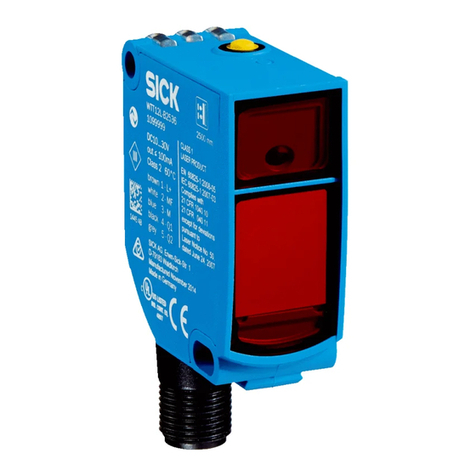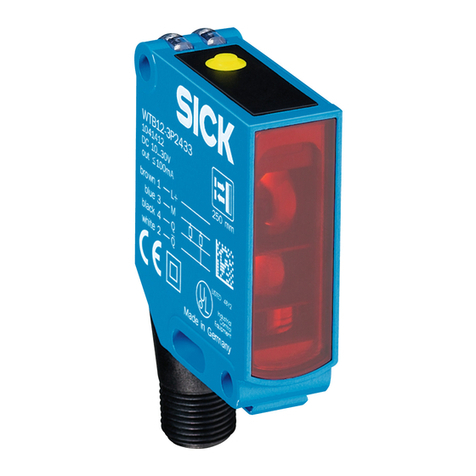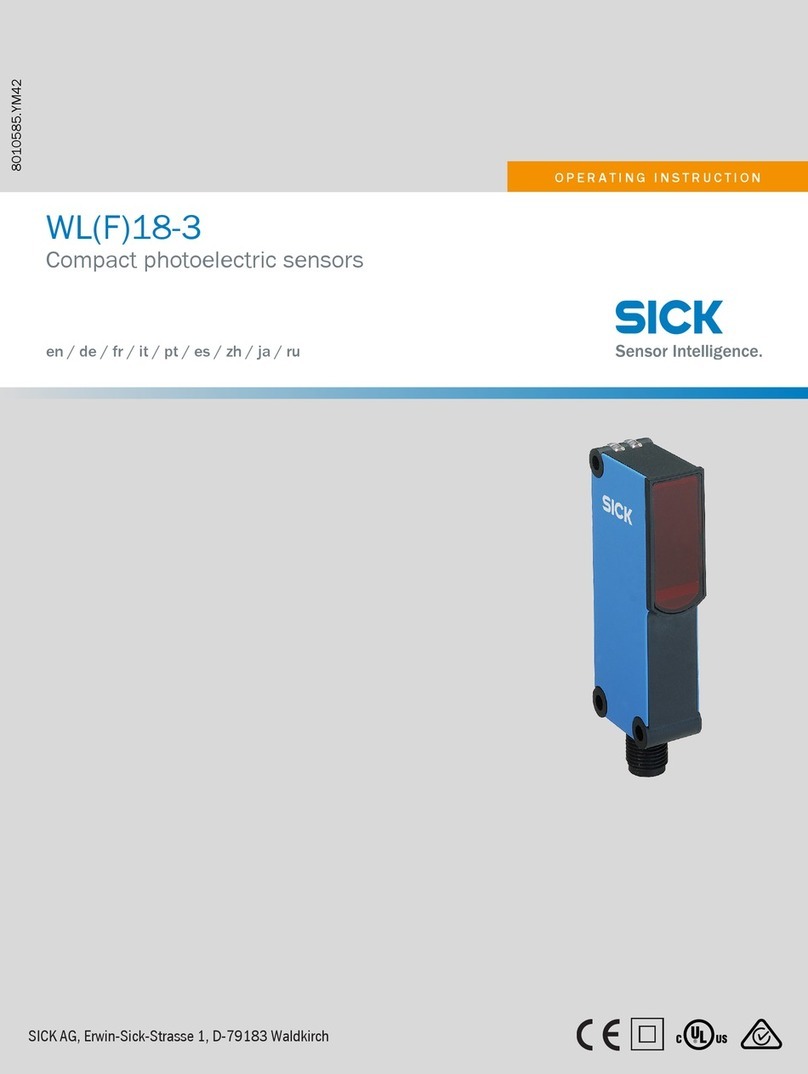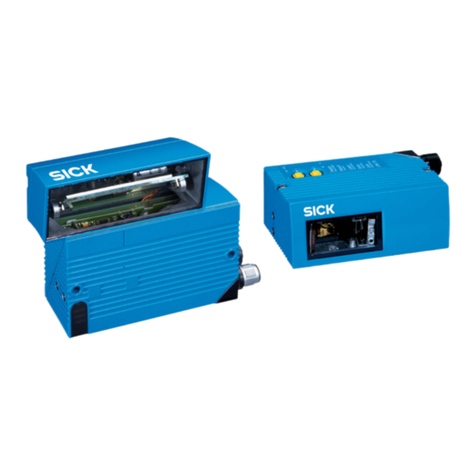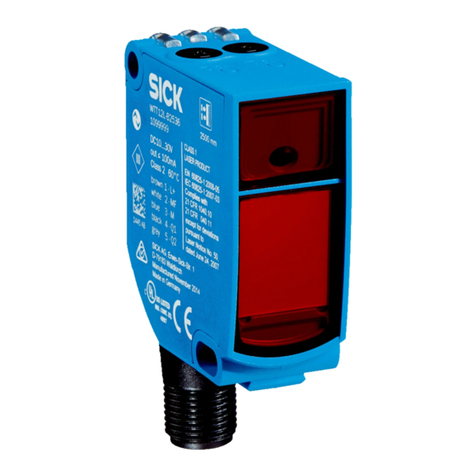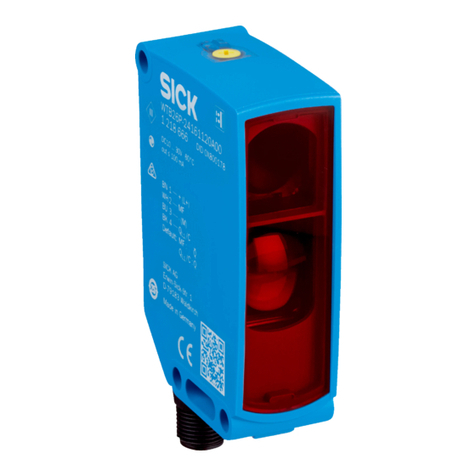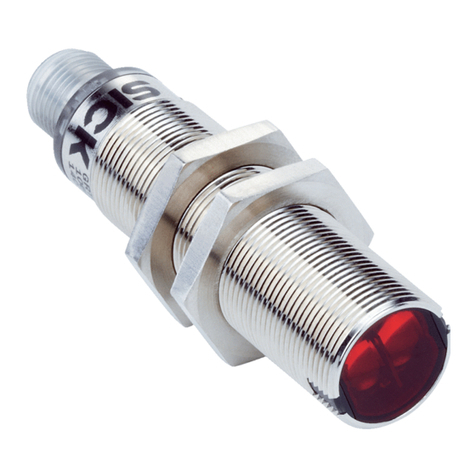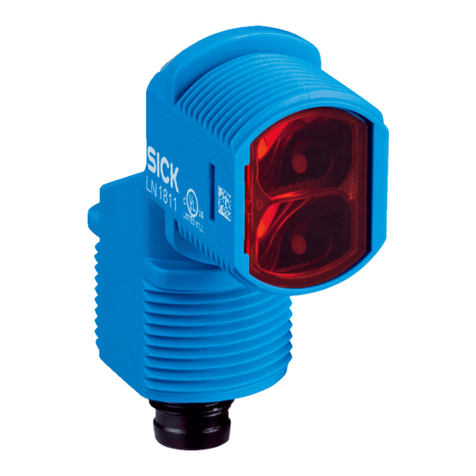
LED indicator/fault pattern Cause Measures
Yellow LED flashes Sensor is still ready for oper‐
ation, but the operating condi‐
tions are not ideal
Check the operating condi‐
tions: Fully align the beam
of light (light spot) with the
reflector. / Clean the optical
surfaces (sensor and reflec‐
tor). / Readjust the sensitivity
(potentiometer) / If the poten‐
tiometer is set to the max.
sensing range: Reduce the
distance between the sensor
and the reflector, and check
the reflector type / Reflector
is not suitable for the appli‐
cation in question (we recom‐
mend only using SICK reflec‐
tors) / Check sensing range
and adjust if necessary, see
„Check the application condi‐
tions“, page 5. / Distance
between the sensor and the
reflector is too long
Signal interruptions when
object is detected
Depolarizing property of the
object surface (e.g., tape),
reflection
Reduce sensitivity or change
the position of the sensor
6 Disassembly and disposal
The sensor must be disposed of according to the applicable country-specific regula‐
tions. Efforts should be made during the disposal process to recycle the constituent
materials (particularly precious metals).
NOTE
Disposal of batteries, electric and electronic devices
•According to international directives, batteries, accumulators and electrical or
electronic devices must not be disposed of in general waste.
•The owner is obliged by law to return this devices at the end of their life to the
respective public collection points.
•
WEEE: This symbol on the product, its package or in this document,
indicates that a product is subject to these regulations.
7 Maintenance
SICK sensors are maintenance-free.
We recommend doing the following regularly:
•Clean the external lens surfaces
•Check the screw connections and plug-in connections
No modifications may be made to devices.
Subject to change without notice. Specified product properties and technical data are
not written guarantees.
DISASSEMBLY AND DISPOSAL 6
8016955.1ABM / 21.12.2020 | SICK
Subject to change without notice 9
